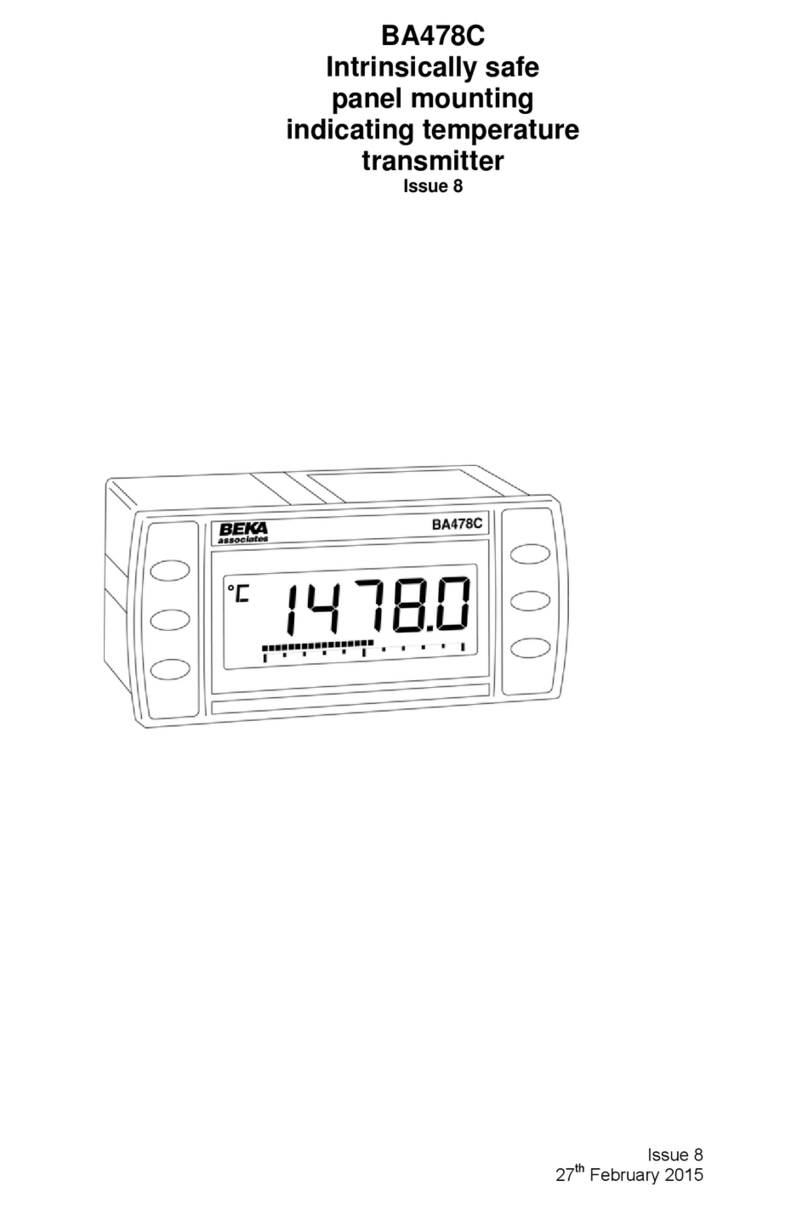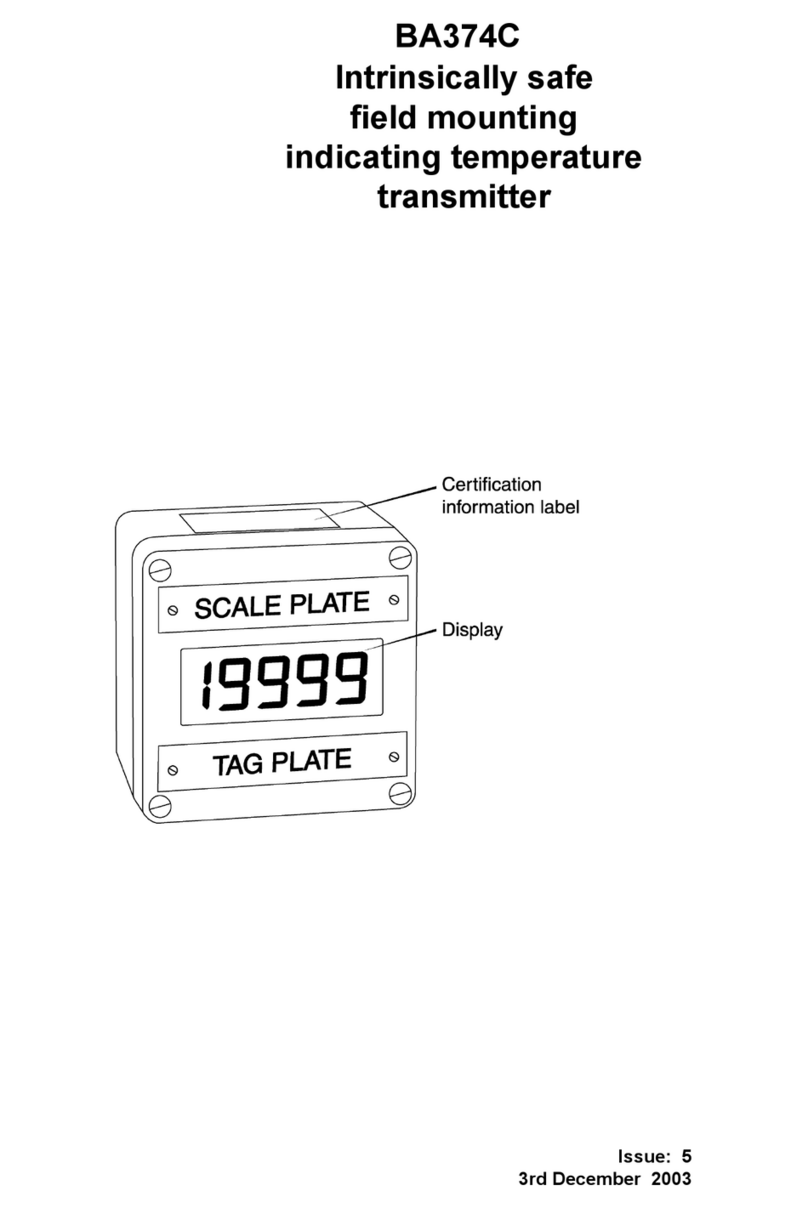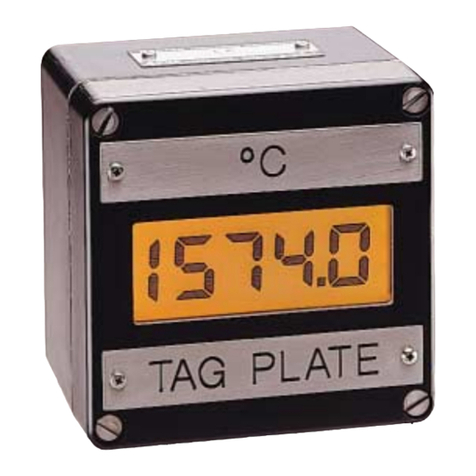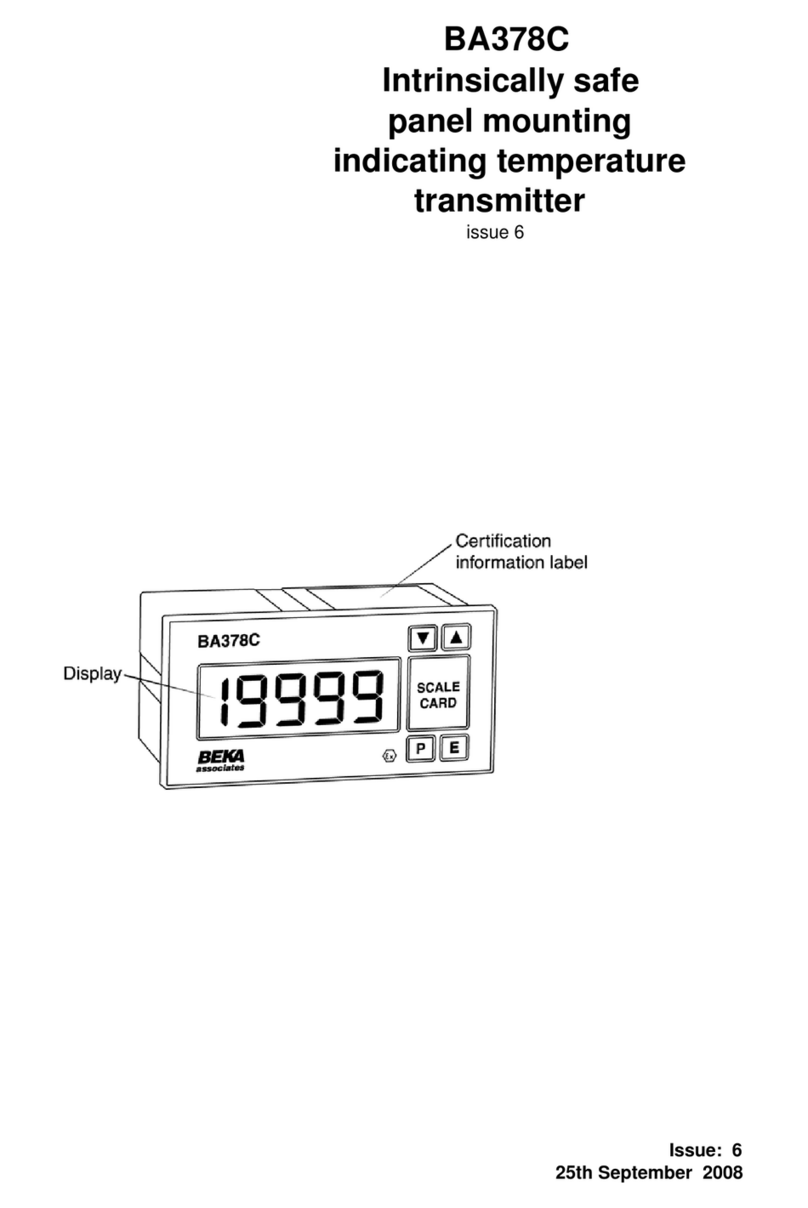
6.2 Description of configuration menu
functions
This section contains a detailed description of each
function in the configuration menu. It should be read
in conjunction with Figs 5, 6 & 7.
6.2.1 Transmitter input ‘InPut’
This function enables the BA678C indicating
temperature transmitter to be conditioned to operate
with a thermocouple, 3 or 4 wire resistance
thermometer, voltage or 3 or 4 wire resistance input.
A differential resistance thermometer input may also
be selected. A differential thermocouple input is
achieved by selecting the thermocouple input in this
function and turning the cold junction compensation
off in the CJC function – see 6.2.5.
Sensor Transmitter
display
Thermocouple ‘tHC’
3 wire RTD ‘3rtd’
4 wire RTD ‘4rtd’
Differential RTD ‘d_rtd’
Voltage ‘VoLt’
3 wire resistance ‘3rES’
4 wire resistance ’4rES’
The ‘InPut’ function is the first function displayed
when entering the configuration menu, or it may be
selected from within the menu by operating the or
button. To enter the function press Pto reveal the
existing setting which may be changed using the
or button. When the required input has been
selected press Eto enter the selection and return to
the ‘InPut’ prompt in the configuration menu.
6.2.2 Thermocouple type ‘t.tYPE’
This function enables one of eight common
thermocouples to be selected. The following table
shows the thermocouple types, indicator display and
the operating temperature range.
THC BA678C Temperature
Type Display range oC
B ‘b’ 200 to 1820
E ‘E’ -200 to 1000
J ‘J’ -210 to 1200
K ‘H’ -200 to 1372
N ‘n’ -200 to 1300
R ‘r’ -50 to 1768
S ‘S’ -50 to 1768
T ‘t’ -200 to 400
The ‘t.tYPE’ function may be selected from within the
menu by operating the or button. To enter the
function press Pwhich will reveal the existing setting
which may be changed using the or button.
When the required thermocouple has been selected,
press Eto enter the selection and return to the
‘t.tYPE’ prompt in the configuration menu.
6.2.3 Units of digital display ’dEG’
The transmitter digital display may be in one of four
units of temperature.
Units Transmitter Display
oC
oC
oF
oF
r r
K H
When oCoroF are selected the units of measurement
are shown at the top left hand corner of the display
when the transmitter is in the operating mode.
The ‘dEG’ function may be selected from within the
menu by operating the or button. To enter the
function press Pwhich will reveal the existing setting
which may be changed using the or button.
When the required units have been selected, press E
to enter the selection and return to the ‘dEG’ prompt
in the configuration menu.
6.2.4 Display resolution ‘rESn’
This function defines the resolution of the transmitter
display but does not affect the resolution of the
4/20mA output current.
Resolution Transmitter Display
Lo 0 0 0 0 0
Hi 0 0 0 0.0
The ‘rESn’ function may be selected from within the
menu by operating the or button. To enter the
function press Pwhich will reveal the existing setting
which may be changed using the or button.
When the required resolution has been selected,
press Eto enter the selection and return to the ‘rESn’
prompt in the configuration menu.
6.2.5 Cold junction compensation ‘CJC’
The temperature of the thermocouple cold junction,
which is the transmitter input terminals, is measured
and added to the thermocouple output so that the
transmitter displays and transmits the hot junction
temperature. If cold junction compensation is not
required e.g. for differential measurements with two
thermocouples, this function allows it to be turned off.
The ‘CJC’ function may be selected from within the
configuration menu by operating the or button.
To enter the function press Pwhich will reveal the
existing setting which may be changed using the
or button. When set as required, press Eto enter
the selection and return to the ‘CJC’ prompt in the
configuration menu.
10




































